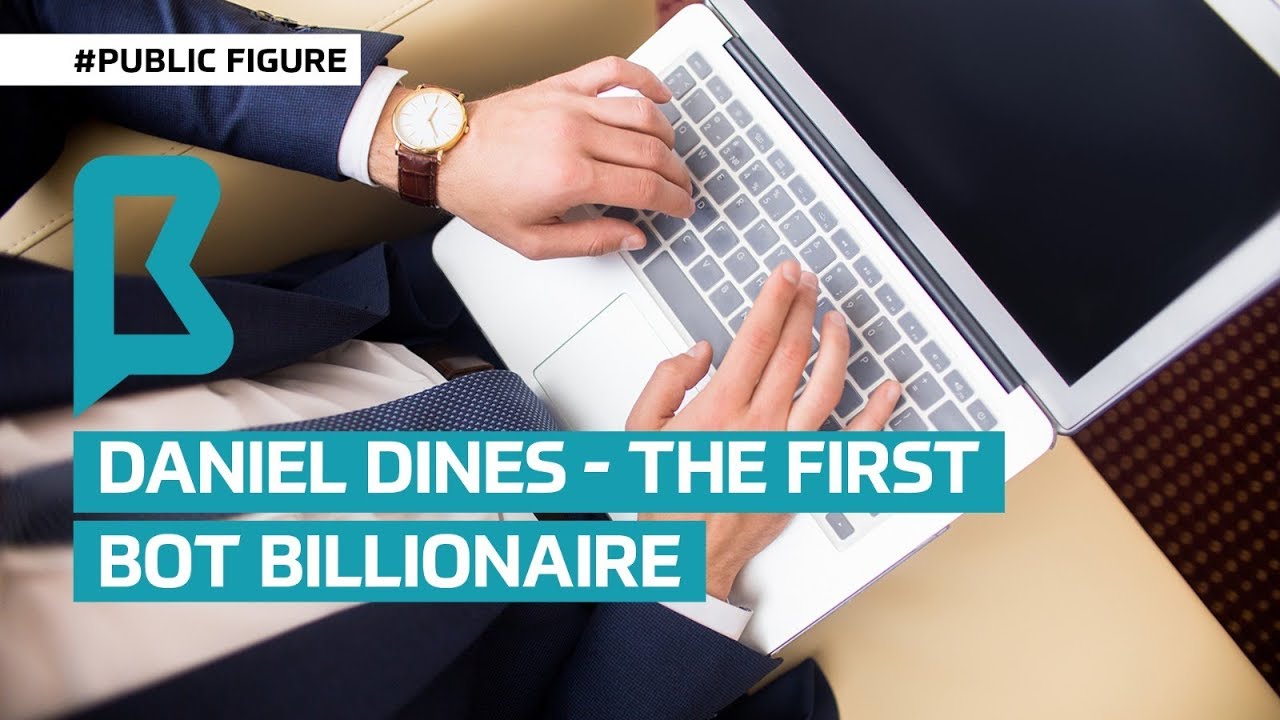What is the McKinsey 7S framework for successful management
What is the McKinsey 7S model explained briefly?
The McKinsey 7S model is a business framework to address the essential role of coordination, rather than structure, in organizational effectiveness.
This business framework states that the organization is not the structure and is a model of organizational change.
Whenever organizations need to adapt to new business environments the hierarchy of the organization (who is tasked with what, who reports to whom, who needs approval from whom etc) is irrelevant.
The organization goes beyond its structure. It’s a complex ecosystem comprised of seven factors which interact with each other and influence an organization’s ability to change.
What are the 7S of McKinsey’s framework?
The seven factors of the McKinsey 7S framework are STYLE, SKILLS, SYSTEMS, STRUCTURE, STAFF, STRATEGY and SHARED VALUES.
For an organization to change successfully, it needs to approach every S factor.
The framework shows that every factor interacts with the other six. The organization cannot make significant progress towards change by focusing on one area and ignoring the rest. The organization must tackle its approach to change by moving into all seven S factors.
Let’s explain every S factor of the McKinsey model.
McKinsey 7S framework – Style
By style, the authors of the McKinsey 7S framework mean culture.
What is organizational culture and why is it essential to an organization’s success?
The culture of a company or organization is a set of shared beliefs, values and practices. The organization’s CEO, founder or top management are responsible for outlining the organization’s culture and hiring the right people that will maintain it.
For many organizations, culture drives success.
Neflix’s No rules policy is at the heart of its culture. The famous entertainment company nurtures employee freedom and encourages responsibility.
At UiPath, the efforts of top management are focused on providing employees with psychological safety beyond anything else.
At Amazon, employees are encouraged to think like an owner.
In every one of these organizations, success is synonymous with innovation and culture is the medium that facilitates innovation.
McKinsey 7S framework – Skills
Skills refers to organizational skills as well as individual skills.
What does your organization do best? What is your organization known for? What are its strengths? Is it creativity and design? Is it distribution or sales?
BMW is known for its innovative engineering and fast engines.
Coca-Cola has one of the most successful distribution systems in the world.
Louis Vuitton is renowned worldwide for its high-quality luxury handmade handbags.
The skills factor is also important to reveal skills gaps in the organization. With the business environment being disrupted by new technologies, organizations face increasing needs to fill skills gaps. They can either hire highly-specialized talent or upskill their current employees.
Another question that organizations must aks is do we need to improve hard skills or soft skills?
It’s an important question because the needs of an organization may shift every few years to follow changes taking place in our society. Read about the top 5 most in-demand soft skills in 2021.
Marketing is an industry where learning never stops. The professional growth and career advancement of a marketer now hinge on his or her desire and ability to learn new things. Read 4 skills that every successful marketer should acquire in 2021.
McKinsey 7S framework – Systems
By systems, the McKinsey framework means all the procedures, formal and informal, that make the organization go day by day.
How does the organization get things done?
Here are some of the main systems that an organization operates to achieve its goals:
- IT
- Financial
- Hiring
- Customer service
- Product development and delivery
- Information management
- Internal communication
- Planning
- Employee evaluation
There is a significant difference between how organizations were doing customer service in the 1980s and how it’s done today.
Organizations nowadays have a slew of digital tools they can use to solve the customer’s requests efficiently – Chatbots, Whatsapp, social channels etc.
McKinsey 7S framework – Structure
The structure factor of the McKinsey 7S framework refers to the way the organization is structured.
Is it centralized, decentralized or a hybrid?
Historically, the first organizations were centralized with one man, ie the founder or the CEO, taking every decision.
Apple under Steve Jobs is an example of a centralized organization where the founder made decisions regarding design, functionality, features etc.
The centralized organization can be very effective and ensures that the founder’s vision is carried out throughout the company and reflected in the product. But when the organization scales up, this type of organizational structure reveals its flaws. The organization is slow to make decisions and adapt to changing circumstances.
Starting with the 1950s, decentralization became the focus of organizations which had achieved a certain level of size and complexity.
Within these organizations, the number of employees had increased and subsequently the number of interactions required to make things work. The size and complexity of these organizations had become a burden and they were in danger of breaking down.
Decentralization was the solution. A decentralized organization is able to make decisions fast and adapt swiftly to its environment.
Other organizational structures are the line structure, the functional structure, the line-and-staff structure, the project-based structure, the matrix structure etc.
McKinsey 7S framework – Staff
Staff refers to the people in the organization and looks into the ways the organization nurtures and develops its employees.
How does the organization motivate its employees? What strategy does the organization employ to hire for diversity? Once diversity achieved, does the organization have an inclusion strategy?
Workforce diversity is a competitive advantage. A team which includes members of different generations, background cultures, interests and talents provides the organization with different insights and perspectives and drives creativity.
McKinsey 7S framework – Strategy
Strategy is defined as the actions a company plans to take to achieve its business objectives.
The plan outlines what (resources), how (specific tools, activities, platforms etc) and why (the reasons behind your choice of a specific resource or tool) the company will use to achieve its goals.
The strategy’s secondary goal is to define how the organization differentiates itself from the competition and create unique value. Learn how to create a strategic plan in 5 steps.
A successful organization must be able to change its strategy to match the current business environment. When organizations fail to see the need to change, they miss out on the opportunity to adapt and survive.
Nokia’s culture of status, shared fear and temporal myopia made the company vulnerable to competitive forces and prevented it to adapt its strategy (more on this in Why did Nokia fail?).
Microsoft, on the other hand, learned from Nokia’s mistakes (Microsoft acquired Nokia in 2014). When Satya Nadella became CEO, his main leadership challenge was to change the company’s culture. In his opinion, “The C in CEO stands for Culture”.
McKinsey 7S framework – Shared values
What is the organization trying to achieve? What is the organization’s social mission? How does the organization respond to the question Why?
In 2009, best-selling author Simon Sinek defined the concept of Why as the purpose, cause or belief that drives every one of us, leaders and employees alike.
Google’s mission is to organize the world’s information and make it universally accessible and useful.
TikTok’s mission is to inspire creativity and bring joy.
BRAND MINDS’ mission is to unite the business world by providing world-changers with the ultimate business experience.
Having a clear mission statement and delivering on it is paramount for a company’s reputation and bottom line. Consumers and employees expect organizations to stand for something. When they fail to deliver, organizations are met with protests and call-outs. For some organizations, change is now coming from employees putting pressure on the management, not the other way around.
Join the Conversation
We’d love to hear what you have to say.
Get in touch with us on our LinkedIn Page, Facebook Page, Twitter or TikTok.
How Amazon, Nike and UiPath drive innovation
Innovation is at the core of Amazon, UiPath and Nike. Curious to know how these global companies drive innovation? Keep reading!
Amazon – Innovating by focusing on customer needs like no other company in the world
On December 15, 2020, Amazon announced that Twitter has selected AWS to provide global cloud infrastructure to deliver Twitter timelines.
A day before, Amazon launched Alexa’s new Live Translation feature. This feature allows individuals speaking in two different languages to converse with each other, with Alexa acting as an interpreter and translating both sides of the conversation.
Earlier this month, on December 8, 2020, Amazon Web Services (AWS) and the BMW Group announced a comprehensive strategic collaboration to further accelerate the automaker’s pace of innovation by placing data and analytics at the center of its decision-making.
These are just a few of the innovations that Amazon releases on a monthly basis. Amazon began focusing on technology innovations in the late 1990s.
The company’s first major breakthrough was its recommendation algorithm, also named recommendation engine.
In 2003, Amazon published a research paper which described a new way of filtering, the Item-to-item Collaborative Filtering.
“At Amazon.com, we use recommendation algorithms to personalize the online store for each customer. The store radically changes based on customer interests, showing programming titles to a software engineer and baby toys to a new mother”, was said in the paper.
Today, Amazon’s machine learning-powered recommendation engine drives 35% of its sales according to a McKinsey report.
An online bookstore initially, Amazon has become rapidly aware of the necessity of becoming a tech company.
In 2019, the research and development expenses of Amazon were around $36 billion compared to $16.9 billion of Microsoft.
Amazon’s investment supports the company to achieve its vision of becoming “Earth’s most customer-centric company.”
Here is a list of the most important innovations developed by Amazon:
Amazon Go
Amazon Go is a chain of convenience stores in the United States, operated by Amazon. The stores are partially automated, with customers able to purchase products without being checked out by a cashier or using a self-checkout station. There are currently 27 Amazon Go stores.
Amazon fulfillment centers
In every fulfilment centre, computer vision systems analyze images to help Amazon staff keep track of everything. Based on data, AI solves a large combinatorial optimization problem and decides which orders to pick at the same time in order to get them in the same box. This way the system minimizes the distance the transport pods have to travel. AI optimization makes these decisions in real-time and with information that is constantly changing.
Amazon Prime Now
Amazon Prime Now is an app which allows users to order tens of thousands of products to their homes with 1-hour delivery and FREE 2-hour delivery.
Amazon Prime Air
Amazon Prime Air is a service that will deliver packages up to five pounds in 30 minutes or less using small drones.
AWS – Amazon Web Services (AWS) is the world’s most comprehensive and broadly adopted cloud platform, offering over 175 fully featured services from data centers globally. The platform is used by individuals, companies, and governments, on a metered pay-as-you-go basis.
Alexa
Alexa is a virtual assistant AI technology developed by Amazon in 2014 and first used in the Amazon Echo smart speakers.
Kindle
Kindle is a series of e-readers which enable users to browse, buy, download, and read e-books, newspapers, magazines and other digital media. The device was launched in 2007.
Style Snap
StyleSnap is the latest Amazon AI-powered feature which supports fashion-focused shoppers.
Show and Tell
Show and Tell allows the blind to identify grocery items by holding each item to the Echo Show camera and ask, “Alexa, what am I holding?”. The smart speaker identifies the item through advanced computer vision and machine learning technologies for object recognition.
UiPath – The path to innovation is paved with humility
UiPath is the world’s leading Robotic Process Automation vendor.
For the second consecutive year, UiPath has been placed highest in the Leaders’ quadrant for ability to execute by Gartner.
In July 2020, UiPath became the first European Cloud Decacorn with $10.2Bn valuation in a new funding round of $225M.
At UiPath, innovation comes from actively listening to and engaging with the company’s customers. “Solving real-world problems using artificial intelligence (AI)—and pairing AI with RPA—motivates every individual at UiPath.”
The company gathers feedback from many touchpoints, including preview programs, its customer advisory board, their 400k+ user community, meetups, and conferences.
UiPath’s purpose is to accelerate human achievement. The company’s core values are speed, immersion, boldness and humility.
UiPath top management believes that if their people are not happy, they have failed no matter how successful the company is. That’s why being a successful leader at UiPath means exercising humility and practising active listening. The employee who is provided with psychological safety is more likely to focus on achieving the company’s business goals.
Nike – Innovation through knowledge and insights
Nike is no longer just an athletic shoe manufacturer, it’s a technology company.
The brand’s mission is to expand human potential. And to achieve that, Nike creates new products through game-changing innovations.
Most innovations come from the brand’s own lab, the Nike Sport Research Lab which the company set up in 1980. The lab focuses on biomechanics, physiology, sensory/perception and data science.
Over the course of thirty years, Nike’s lab, employing more than 40 researchers has grown into a world-class research facility. Its function is to provide knowledge and insights and turn data into innovative products for athletes.
The Nike Flywire support system, Lunarlite foam cushioning, Hyperdunk basketball shoe are among the most famous.
The latest innovation is Nike Fit, a foot-scanning solution designed to find every person’s best fit. Nike Fit uses a proprietary combination of computer vision, data science, machine learning, artificial intelligence and recommendation algorithms to find your right fit.
A report from 2017 estimated that Nike has spent “~$2.5 billion on research and development in the last five years.”
Read BUSINESS reSOURCES: a PESTEL analysis of Nike
Join the Conversation
We’d love to hear what you have to say.
Get in touch with us on our LinkedIn Page, Facebook Page, Twitter or TikTok.
4 brilliant marketing skills to achieve success in 2021
Looking to achieve success in 2021 as a marketer? Check these 4 brilliant marketing skills!
1. Automation skills
Automation is the elimination of all manual labour through the use of automatic controls that ensure accuracy and quality and was first coined in the 1940s at the Ford Motor Company. Automation ushered in the industrial revolution by producing goods at scale faster and better than the traditional man-powered system.
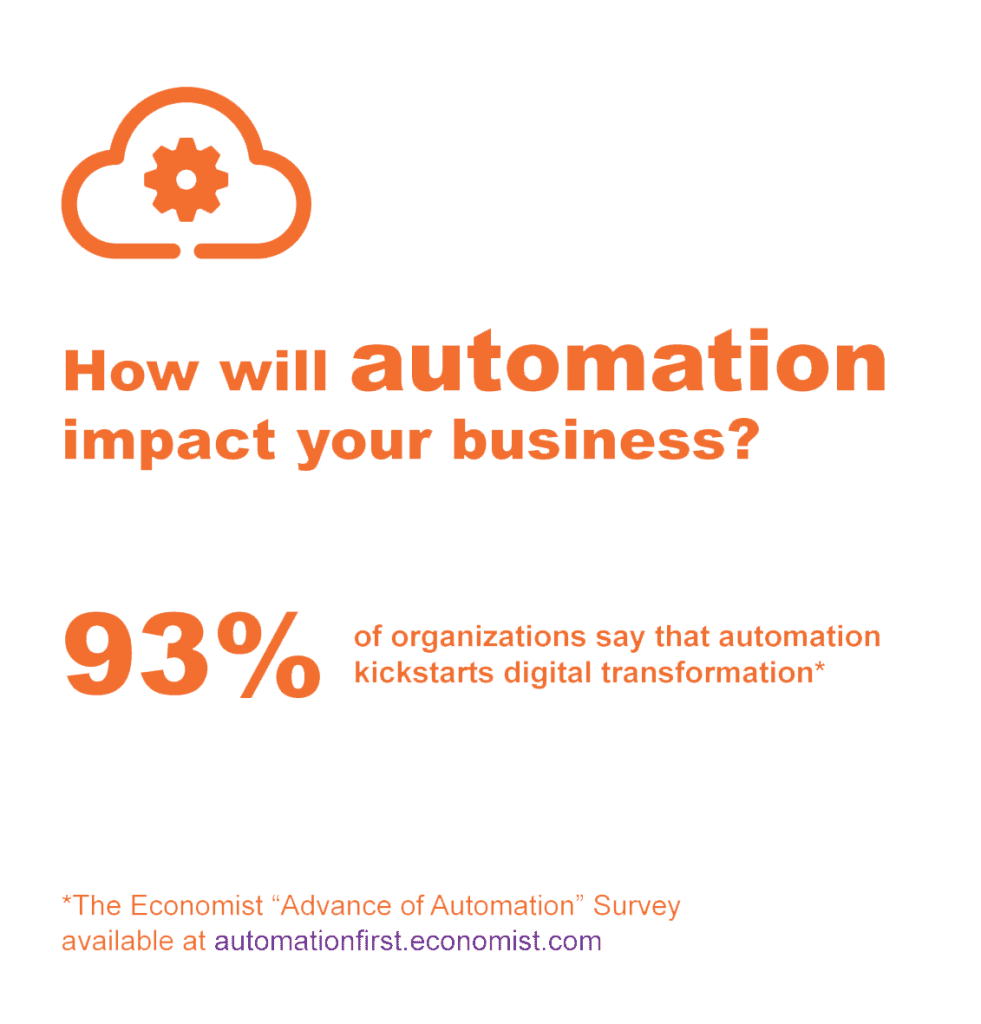
Business-wise, automation supports the organization’s efforts of streamlining its operations and processes thus freeing the employees from doing time-consuming tasks and allowing them to tackle creative tasks where they can add real value.
Learn more about business automation in 4 technologies every business should use to achieve its goals effectively in 2021.
In October 2020, leading Robotic Process Automation software (or RPA) UiPath’s survey on automation skills found that 70% of senior executives want non-technical employees to have automation and AI skills.
They also believe that employees with automation and AI skills will benefit from increased career advancement opportunities.
We are living in a digital world so it stands to reason that marketers should make the most of any digital tools that could help them achieve their goals.
What marketers are looking for is the next big idea that will increase market share, brand awareness and generate sales. Time is of the essence in any business, but in marketing, this is abundantly true. So automating time-consuming tasks whenever possible helps marketers become more efficiently and accurately.
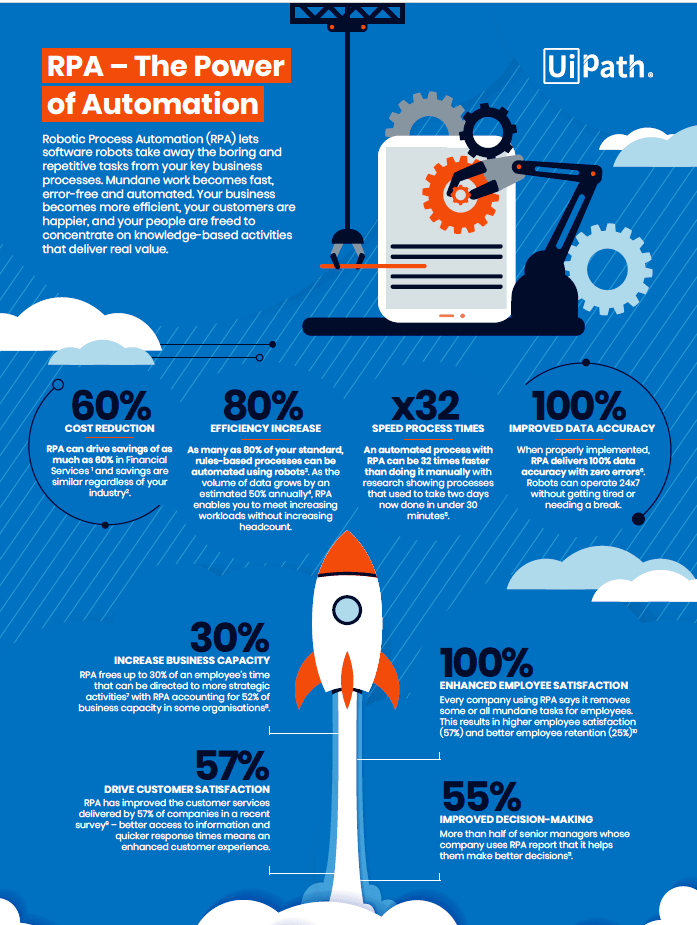
Infographic source: uipath.com
Here are some of the tasks you can assign to a software robot aka automate:
- Data integration with Excel automation for financial analysis;
- Data manipulation;
- Screen scraping;
- Create automation for single activities, desktop applications, multiple actions, web apps, and virtualized environments;
- PDF data extraction;
- Email automation.
Do you need any programming skills to automate tasks?
No.
RPA doesn’t require any programming skills to get started.
That’s great news but how come, you might ask?
The RPA software records tasks as they are being worked on by you and then replay these recorded tasks and voila!
Your mini-digital-you is doing them faster and better so you can focus on more important tasks.
To learn more about automation or begin upskilling, check out UiPath Academy’s free RPA training.
2. Trendwatching skills
BRAND MINDS 2020 speaker Gary Vaynerchuk started the Wine Library TV four months after YouTube launched in 2005. He was the first entrepreneur to build video content for a brick-and-mortar business.
Fifteen years later, Gary is now a digital expert and media icon with a combined 16-million followership. Having foreseen the video content trend taking off definitely helped him.
Watching the trends is a skill every marketer should start developing today. Not every brand can be a trendsetter, but every brand should watch the trends taking off or slowing down.
When marketers pair this kind of insight with creativity and a marketing goal, it’s a boost to the brand’s competitive advantage. And that could potentially be what separates one brand from its competition.
Here are 3 trend watching tools that you should explore:

Trendwatching is one of the world’s leading consumer trend firms since 2002. It is purpose-built to guide, inspire and empower business professionals. The company relies on its proprietary Purpose-Driven Innovation (PDI) methodology, a core analytical framework that turns trends into meaningful business opportunities.

Glimpse identifies growing trends by analyzing hundreds of millions of consumer behaviour signals from across the web, including products, companies and industries. Did you know that Chessable, a platform teaching players about different chess openings, endgames, and tactics has seen an increase in online popularity? It’s partly due to Netflix’s release of The Queen’s Gambit, which prompted the searches and online discussion of chess to double.

Trend Hunter boasts a monthly viewership of 20 million and identifies as a trend community. The company leverages big data, human researchers and AI to identify consumer insights and deep dive opportunities for the world’s most innovative companies. Among standard trends categories such as products, brands, topics or people, Trend Hunter also includes ideas as part of its offer.
3. Growth marketing skills
What is growth marketing?
Let’s look at three definitions of growth marketing I curated from different sources. Observe the bolded words.
The first definition says growth marketing is defined as the strategies, tactics and techniques used to focus on growing a business, product or service. Unlike regular marketing activities, the emphasis and activities focus on accelerating growth. (source)
The second definition says growth marketing is a process of rapid experimentation across marketing channels and product development to identify the most efficient ways to grow a business. (source)
The third definition of growth marketing goes as follows: Growth marketing is an approach to attracting, engaging, and retaining customers that’s focused on relentless experimentation and an intense focus on the unique, changing motives and preferences of your customers (source).
As you can see, there is no single accepted definition of growth marketing but some parts do overlap. The bolded words in each definition are my way of helping you see where that definition directs its focus.
So what’s growth marketing?
The first says it’s about strategies, techniques and tactics, which is an outward overview. The second talks about a process of rapid experimentation (speed) and includes product development which is an interesting approach. The third looks inward and makes the customers its focal point. It also includes experimentation, but this time it’s not about speed, but endurance over a long period. Think Sir Mo Farah, the marathon runner instead of Usain Bolt, the fastest man in the world.
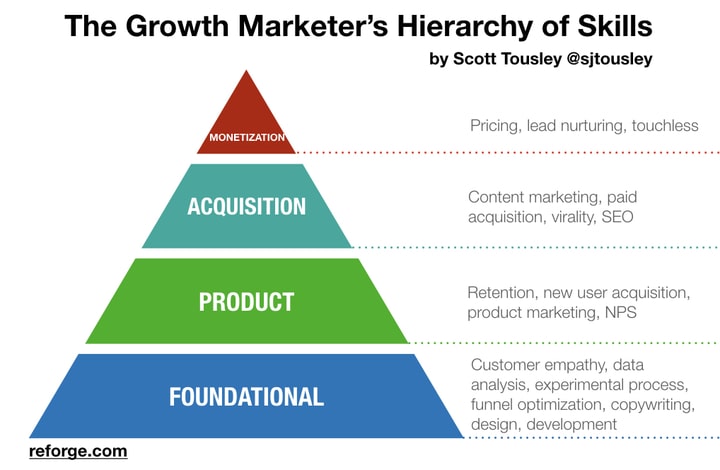
Seeing that growth marketing has so many definitions, what is the role of a growth marketer?
Also, don’t confuse growth marketer with growth hacker. According to Sean Ellis, the original growth hacker, a growth hacker is “the unique hybrid between a coder and a marketer”, thinking of growth first, budget second. He takes advantage of systems based on loops and goes deeper into the customer funnel.
Today’s fast-moving digital business environment requires marketers to turn into T-shaped marketers.
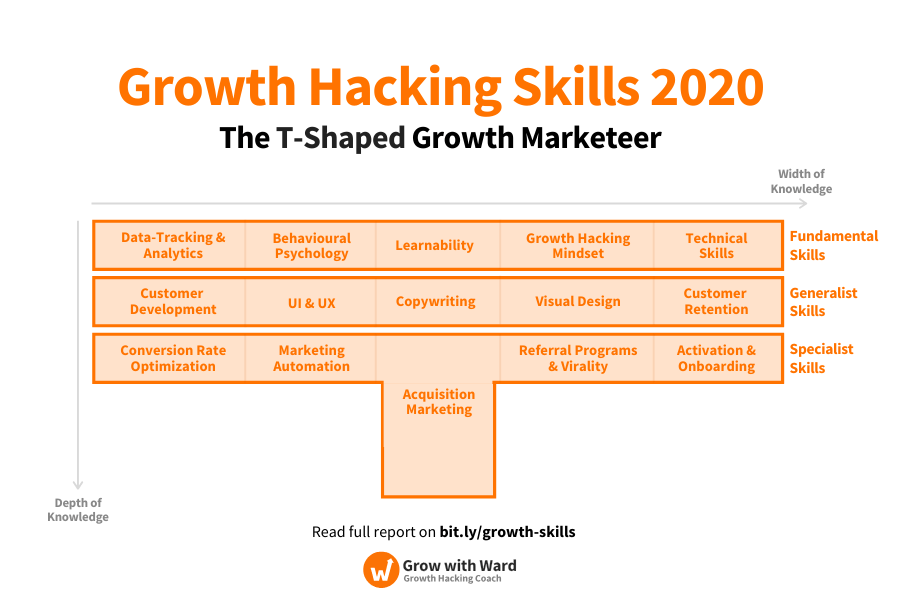
Fundamental growth marketing skills:
- Data-tracking & analytics
- Behaviour psychology
- Learnability (the desire and ability to grow quickly and adjust one’s skillset)
- Growth-hacking mindset
- Technical skills
Generalist skills:
- Customer development
- UX & UI development
- Copywriting
- Visual design
- Customer retention
Specialist skills:
- Conversion rate optimization
- Marketing automation
- Acquisition marketing
- Referral programs & virality
- Activation & onboarding
4. Stay informed
Successful marketers know what’s going on in the industry.
They follow the trends and the numbers, but, more importantly, they follow the people.
And I’m not talking about big celebrities, although every marketer should be aware of their power to influence communities and consequently their customers (there’s always a lesson to learn here).
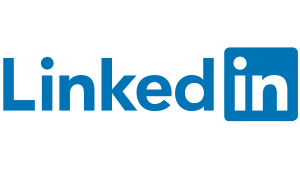
What I’m talking about is connecting with industry experts in various verticals on LinkedIn or other social media platforms.
From experienced sales professionals to UX designers, video content creators to business analysts, consumer behaviour specialists to performance marketers – they are valuable resources for any marketer looking to succeed today.
Follow them and you will always stay updated with the latest trends in marketing in particular and business in general.
Also, you will know what other brands do well or not so well. Why Quibi, the USD 2 billion-startup founded by one of the most powerful producers in Hollywood, led by an experienced CEO and slated for success, crashed and burned in just six months after its launch? There are definitely two lessons to be learned here: one is related to leadership, the second is related to marketing.
Use LinkedIn to achieve your professional goals. Connect with or follow industry experts or peers that share valuable insights. If you don’t know where to begin, check out LinkedIn’s Top Voices 2020 list.
Join the Conversation
We’d love to hear what you have to say.
Get in touch with us on our LinkedIn Page, Facebook Page, Twitter or TikTok.
Daniel Dines – The first bot billionaire
Daniel Dines, founder and CEO of UiPath is the richest Romanian and the first Bot Billionaire.
Find out more about him in the video!
How Company Culture Drives Success – Netflix, HubSpot and UiPath
What is company culture? Company culture is a set of shared beliefs, values and practices.
Let’s see how Netflix, HubSpot and UiPath define their company culture and why it is central to their success.
Netflix Company Culture – With Empowerment comes Trust and Expectations follow. The ‘No Rules Policy’.
Netflix is one of the first companies to draft an in-depth long-form employee culture manifesto.
It’s been ten years since Netflix CEO Reed Hastings published his SlideShare presentation detailing his company’s employee culture. The slide has gained over 19 million views to date.
It certainly caused quite a stir among people worldwide! And let me say it again: it was 2009 when the world was still suffering the consequences of the global financial crisis (rising unemployment, declining economic growth, etc).
What makes Netflix’s company culture special?
Instead of tightening its control on employees which is what any other company would do in times of turmoil, Netflix was taking a different and surprising approach.
Like all great companies, Netflix strives to hire the best. So do a thousand other companies, nothing special about that.
Building a great employee culture doesn’t stop with hiring the best people for the job, that is only the beginning.
The hardest part comes after the hiring process has ended and it involves getting every employee on the same page.
How does Netflix do that?
By empowering its employees, trusting them to make the right decisions and expecting them to deliver high-quality work.
Oh, and one more thing: avoiding rules. Now that’s pretty unusual.
We don’t have rules about picking up the real or metaphoric trash. We try to create the sense of ownership so that this behaviour comes naturally.
Our goal is to inspire people more than manage them. We trust our teams to do what they think is best for Netflix — giving them lots of freedom, power, and information in support of their decisions. In turn, this generates a sense of responsibility and self-discipline that drives us to do great work that benefits the company.
We believe that people thrive on being trusted, on freedom, and on being able to make a difference. So we foster freedom and empowerment wherever we can.
We work to have a company of self-disciplined people who discover and fix issues without being told to do so.
“Use good judgment” is our core precept.
Netflix
9 ways Netflix nurtures employee freedom and encourages responsibility:
- Management shares documents internally broadly and systematically;
- No spending controls or contract signing controls;
- Travel, entertainment, gifts, and other expenses are allowed if employees “Act in Netflix’s best interest”;
- No compliance departments that most companies have to enforce their policies;
- Unlimited vacation policy which encourages employees to intermix work and personal time at their own will. It helps them get back to work with fresh new ideas;
- Netflix’s parental leave policy is: “Take care of your baby and yourself”;
- No compensation handcuffs – “People are free to leave at any time, without loss of money, and yet they overwhelmingly choose to stay. We want managers to create conditions where people love being here, for the great work and great pay”;
- The company is strict about ethical issues and safety issues, it shows zero tolerance for harassment or trading on insider information;
- Holding meetings is another corporate pain point that Netflix deals with differently than other companies. The company schedules effective meetings where the meeting starts and ends on time with well-prepared agendas. The main takeaway from this is these meetings are more about learning from each other and get more done than preventing errors or approving decisions.
Every company or/and employee culture is a reflection of the executives working there.
Netflix
HubSpot Company Culture – We dare to be different
HubSpot is a platform uniting software, education, and community to help businesses grow better every day.
The company was co-founded by fellow MIT graduates Brian Halligan and Dharmesh Shah in 2005.
This year, HubSpot was named a Best Workplace for Millennials by Great Place To Work and Fortune, #2 Best Company for Professional Development, Leadership and a Best CEO for Diversity and Women by Comparably. 2700+ HubSpot employees work in 8 global offices.
So how does HubSpot define its company culture?
In 2013, HubSpot published the Culture Code: Creating a Lovable Company on SlideShare.
They state company culture is an obsession because culture doesn’t just help attract amazing people, it amplifies their abilities and helps them do their best work.
What makes HubSpot’s company culture special?
HubSpot set themselves apart from other companies by being different.
How are they different?
They are maniacally committed to their mission and their metrics.
Their mission is to help organizations grow and metrics help them earn the resources to further their mission.
9 ways HubSpot ensures they are different and how employees benefit from it:
- They share openly and are remarkably transparent (financials, board meeting deck, management meeting deck, strategic topics, etc);
- ‘No door’ policy – “Everyone has open access to anyone in the company.”
- They favour autonomy and take ownership;
- When employees need to make a decision the only rule is to use good judgement;
- Employees need to follow only two rules: Don’t solve for your personal interests to the detriment of the team. When in doubt, favour solving for the customers’ interests over our own;
- Long-term interest prevails over anything else;
- “Don’t just hire to delegate. Hire to elevate“;
- “Remarkable outcomes are rarely the product of modest risk.”
- They refactor to continue on being exceptional. They look for simplicity so they avoid turning into a Goliath of an organization – slow to adapt, less innovative, easily outrun by the competition.
Power is gained by sharing knowledge, not hoarding it.
HubSpot
UiPath Company Culture – Humility drives innovation
Co-founded in 2005 in a tiny apartment in Bucharest by Daniel Dines and Marius Tirca, the Romanian RPA has certainly come a long way from its humble beginnings.
Today the company has additional offices in London, Paris, Tokyo, Singapore, Bengaluru and Melbourne.
In 2018, among tens of thousands of large U.S. companies, UiPath has been awarded the 11th Best Place to Work, based on company culture, and one of the top 50 Best Companies for Women and Diversity. Also, UiPath ranked sixth for Happiest Companies in Comparably’s 2018 Culture Awards.
In 2019, UiPath was named a Gartner Magic Quadrant Leader for Robotic Process Automation Software. This recognition celebrates the company’s ability to execute and completeness of vision.
Starting with July 2020, UiPath has become the first European Cloud Decacorn with $10.2Bn valuation in a new funding round of $225M.
What makes UiPath’s company culture special?
UiPath’s purpose is to accelerate human achievement.
They set out to change the way work is done, but they are keen on making their people happy. If their people are not happy, they have failed no matter how successful they are.
UiPath believes that a happy employee is an employee who is listened to by their leaders. And being successful as a leader means exercising humility and practising active listening.
They also state that the company’s future is centred on psychological safety beyond anything else. With global expansion and technological connectedness come unique challenges.
It’s paramount the company finds ways to overcome these challenges and stay on the path to innovation.
The core values of UiPath are speed, immersion, boldness and humility.
7 ways UiPath provides its employees with a psychologically safe workplace:
- Authenticity – The company doesn’t expect its employees to fit a certain mould. Instead, they are encouraged to be who they really are. “We hired you for your unique experience and insight.”
- Trust and ownership from day one – Employees support each other whether they know each other or not;
- Everyone is empowered to speak up if they have an idea even if it’s outside of their expertise because it shows they care and maybe it’s a different perspective the company should take into consideration;
- Humility – Employees are expected to be humble, open and listen in order to learn even that at which they already excel; they are encouraged to get their hands dirty and do whatever it takes to drive towards innovation;
- The company encourages its employees to acknowledge and address their fears because this is the key to personal growth and team improvement;
- UiPath leaders are trained to listen, really listen to their team members and be ready to give and take criticism;
- Employees are encouraged to disconnect their mind from work when they’re at home. This allows space for inspiration and ideas flowing freely which is a great way to keep moving towards excellence.
Buckle up – you’re about to board a rocket ship into uncharted space. This company is a meritocracy and your potential is limitless.
UiPath
Conclusion
All three companies run highly successful businesses with thousands of employees working in offices spread across the world.
The elements that all of them have in common are trust, responsibility and empowerment. Netflix expects its employees to act in the company’s best interest, HubSpot encourages them to use good judgement and UiPath ensures a safe work environment to drive innovation.
What is your company culture?
How does your company culture support your organization achieve its business objectives?
Join the Conversation
We’d love to hear what you have to say.
Get in touch with us on Facebook and Twitter.
Daniel Dines (UiPath) – 3 Insights for Startup Growth
Daniel Dines is co-founder & CEO of Romanian Unicorn startup UiPath, currently valued at $7billion.
Check out the video to find out his insights for startup growth:
Join the Conversation
We’d love to hear what you have to say.
Get in touch with us on Facebook Group and Twitter.
Marius Istrate (UiPath) – Success Is Being Open By Default

UiPath is one of the leading enterprise Robotic Process Automation (RPA) software companies in the world.
The company is currently valued at $3 billion and has been recently included by CB Insights in its Global Unicorn Club and AI 100, a list showcasing the 100 most promising private artificial intelligence (AI) companies in the world.
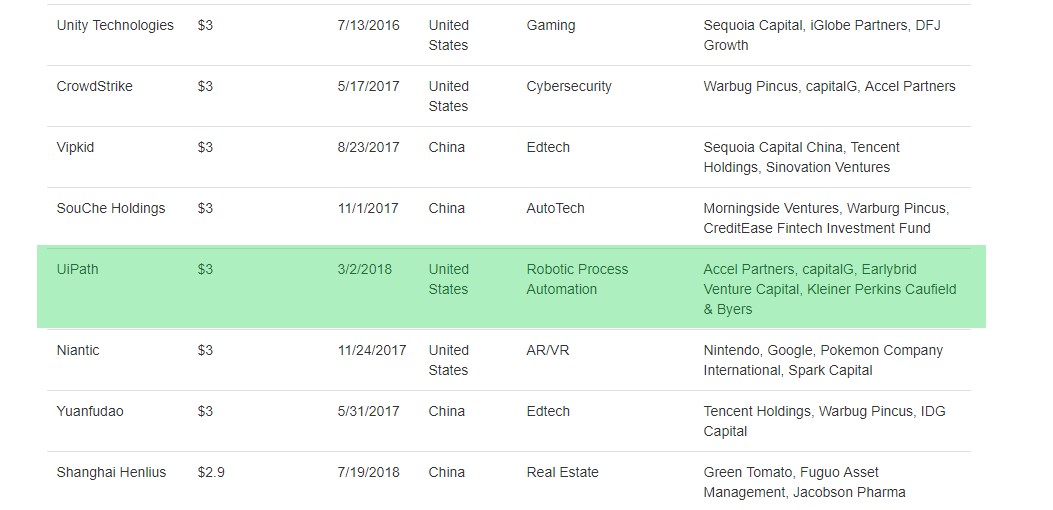
The Global Unicorn Club/source: cbinsights.com
UiPath’s mission is to help companies develop an agile digital workforce that enables them to eliminate repetitive business efforts and improve operational quality.
With offices all over the world today, UiPath was founded by two brilliant Romanian engineers driven by an enduring ambition to build the best technology they possibly could.

Marius Istrate, CPO @ UiPath
To discover the company’s secret for success, I invited Mihai Istrate, Chief People Officer at UiPath to answer a few questions.
Question: In Comparably’s 2018 Culture Awards, UiPath ranked 6th for Happiest Companies. How do you achieve that? Who has the most important role in driving employee happiness and engagement?
Answer: UiPath’s success is strongly linked to the way it was built: as a global, diverse and inclusive company from day one. Everyone has a role in driving employee engagement because we challenge each other and we hold each other accountable for maintaining an „open by default” culture and a pleasant work environment.
A ranking cannot tell you how much effort goes into this, unfortunately: happiness at work means a lot of effort invested in listening to one another, learning from one another across borders and across departments.
[bctt tweet=”Marius Istrate @UiPath: Happiness at work means a lot of effort invested in listening to one another, learning from one another across borders and across departments.” username=”brand_minds”]
We currently have 31 offices in 19 countries, which all bring along their own culture. You achieve happiness by being inclusive and challenging people to be empathetic and listening to each other out.
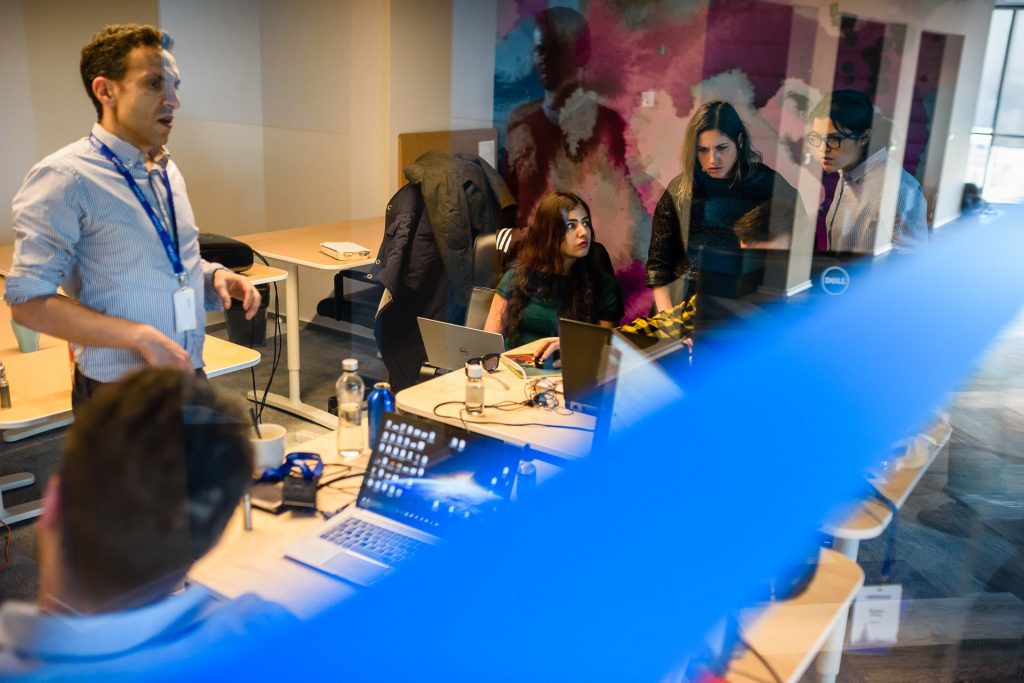
uipath.com
Q: Building a strong community is paramount for long-term business success. What is UiPath’s approach to this subject?
UiPath has always been community driven: even the early pieces of software we developed were released publicly and we rejoiced in the community’s feedback.
It is through our community of developers that we managed to sign the first customer and understand the fit between the product we had developed, UiPath’s Robotic Process Automation (RPA) platform, and a growing market projected to reach $1.7 billion in revenue this year.
Today UiPath is 2500 people strong, but with a community of 250,000 developers behind, 25% of whom have graduated at least 1 course in our online Academy. This instils a feeling of great responsibility in our team, but, again, it is critical for holding us accountable for the quality of our work.

uipath.com
Q: How do you and other UiPath leaders connect your employees with your company’s mission?
We know that over-communicating and living the values, such as leading by example, are the key things to do to help everyone in our organization connect the dots and understand where we’re heading.
UiPath has expanded tremendously over the past three years, both in terms of headcount and as market positioning, becoming the leader of the global RPA market, and one of the fastest growing enterprise software companies in history.
As we grow, we are working towards keeping the organization structured in a simple and lean way. This is not to say that we have 100% achieved this: it is work in progress and there is still a long way to go. But, as we progress towards that goal, we ask our leaders, for instance: „Do you feel like you have communicated enough on the topic of psychological safety within your teams?” And if they haven’t, we challenge them to simplify their organizational structure.
Psychological safety is paramount if we are to achieve what we’ve set out to do, which is deploying a robot on every human worker’s computer.
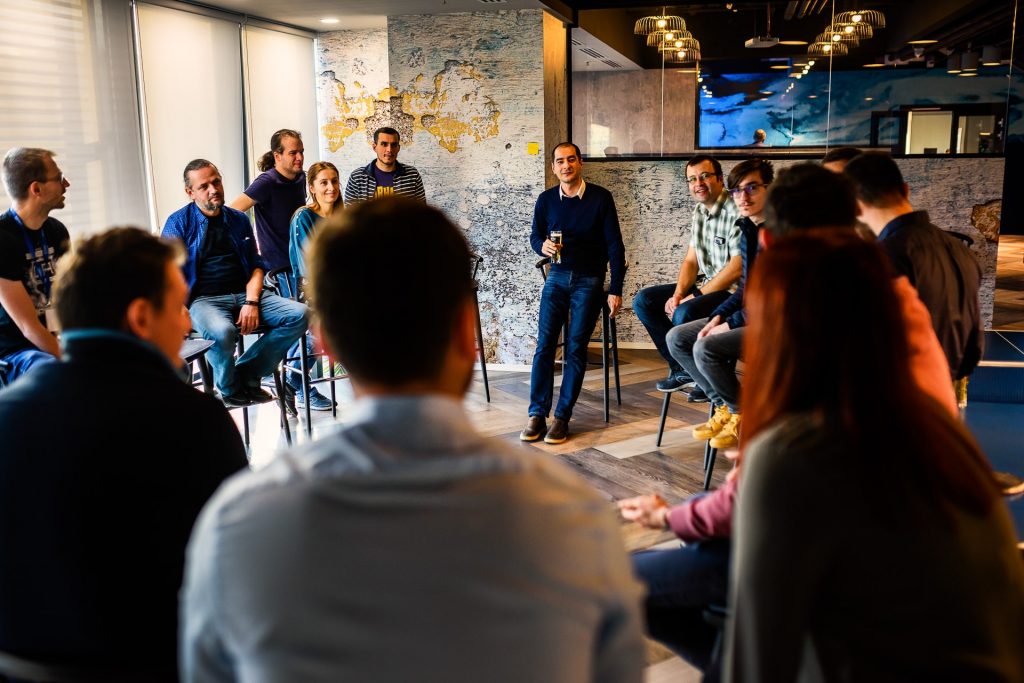
uipath.com
—————————————————————————————————————————————–
Read our previous Success Stories:
Building the homes of the future,
Turning plastic sea waste into fashion,
Writing code to change the world,
Enhance your art experience with tech
Join the Conversation
We’d love to hear what you have to say.
Get in touch with us on Facebook Group and Twitter.
